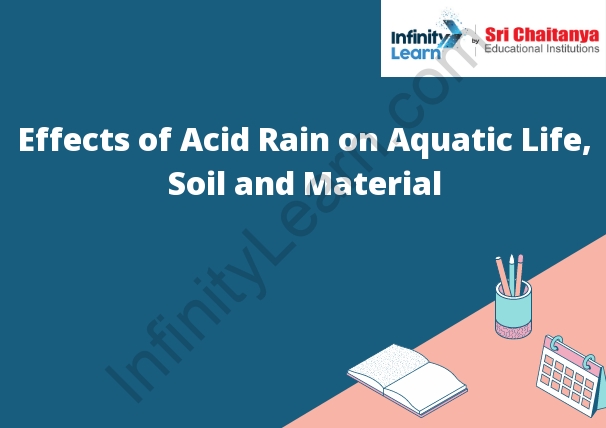Table of Contents
Effects of Acid
Acid rain is a type of precipitation that is more acidic than normal rain. It is caused by emissions of sulfur dioxide and nitrogen oxide from power plants, industries, and automobiles. These gases react with water in the atmosphere to form sulfuric and nitric acids.
The acids fall to the ground as rain, snow, or sleet. Acid rain can damage trees, buildings, and aquatic life. It can also make soil more acidic, which can impair plant growth.

Acid Rain- All about it
Acid rain is a type of precipitation that is caused by the emission of sulfur dioxide and nitrogen oxide from factories, power plants, and cars. These gases react with water vapor in the atmosphere to form sulfuric acid and nitric acid. These acids then fall to the ground as rain, snow, or fog.
Effects of Acid Rain on Aquatic Life
Acid rain has a corrosive effect on many objects, including aquatic life. The acid in the rain can dissolve the protective outer layer of aquatic creatures, such as fish and amphibians. This can lead to skin lesions and a loss of protective scales. The acid can also damage the gills of fish, making it difficult for them to breathe. In extreme cases, acid rain can kill aquatic life.
Effects of Acid Rain on Soil
Acid rain can have a number of adverse effects on soil, including the leaching of essential nutrients, the acidification of the soil, and the contamination of the soil with toxic metals.
Acid rain can leach essential nutrients, such as nitrogen and phosphorus, from the soil, making them unavailable for plant growth. The acidification of the soil can also make it difficult for plants to absorb essential nutrients. In addition, acid rain can contaminate the soil with toxic metals, such as lead and mercury, which can be harmful to plant growth.
Effects of Acid Rain on Materials
The effects of acid rain on materials are highly dependent on the type of material in question. In general, acid rain can corrode metal, dissolve rocks, and damage trees and other plants.
Buffering Capacity
The buffering capacity of a soil is the ability of the soil to resist changes in pH. Soils with a high buffering capacity can resist changes in pH better than soils with a low buffering capacity. Soils with a high buffering capacity are said to be more alkaline, while soils with a low buffering capacity are said to be more acidic.
Ocean Acidification
- The ocean is one of the planet’s most important resources. It helps to regulate the Earth’s climate and is a vital source of food and jobs. The ocean also helps to absorb carbon dioxide (CO2) from the atmosphere.
- Carbon dioxide is a greenhouse gas that contributes to climate change. When the ocean absorbs CO2, it becomes more acidic. This can make it difficult for marine life and coral to thrive in the ocean.
- The ocean’s acidity has increased by 30% since the beginning of the Industrial Revolution. If CO2 emissions continue to rise, the ocean’s acidity could increase by 150% by the end of the century.
- This would have serious consequences for the ocean’s ecosystem and the people who depend on it.
Also read Acid Rain – Chemicals, Causes and Environmental Effects





